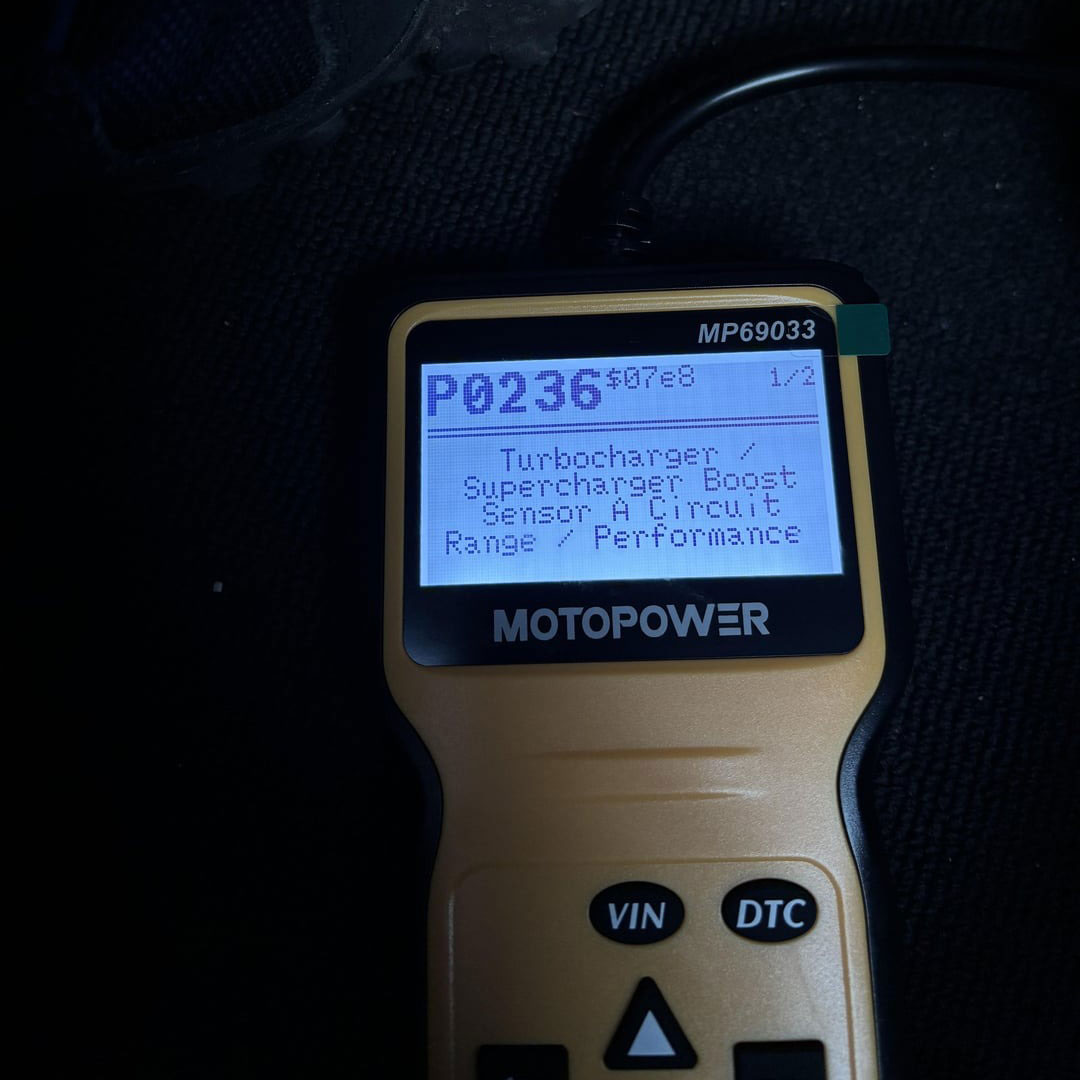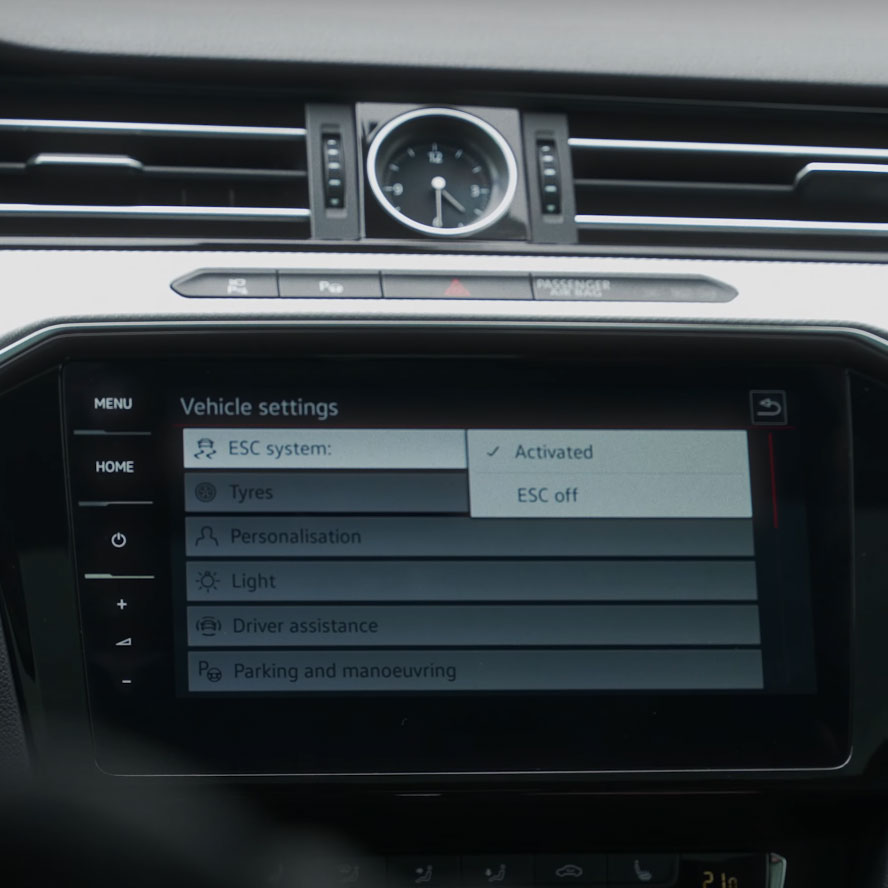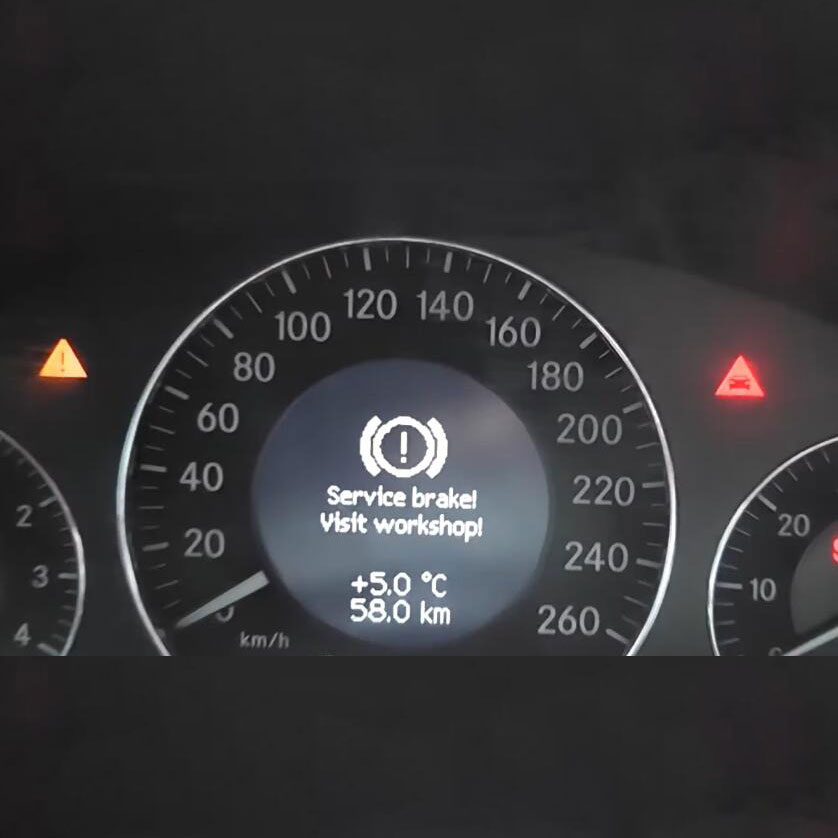
What Does The Audi P0300 Fault Code Mean?
Contents
- 1. What Are The Common Causes of Audi P0300 Code?
- 2. What Are The Symptoms of Audi P0300 Code?
- 3. Can I Drive My Audi With a P0300 Code?
- 4. How Do I Diagnose The Audi P0300 Fault Code?
- 5. How To Fix The Audi P0300 Code?
- 6. What Are The Tools Needed To Diagnose and Fix Audi P0300 Code?
- 7. Can a Bad O2 Sensor Cause a P0300 Code on an Audi?
- 8. How Does Low Fuel Pressure Relate to the Audi P0300 Code?
- 9. What Role Do Vacuum Leaks Play in Triggering the Audi P0300 Code?
- 10. How Does Carbon Buildup Cause an Audi P0300 Error Code?
- 11. How to Prevent Audi P0300 Fault Code?
- 12. What Are Some Advanced Diagnostic Techniques for the Audi P0300 Code?
- Frequently Asked Questions (FAQ)
The Audi P0300 Fault Code signifies a random or multiple cylinder misfire detected by the engine control unit (ECU). This indicates that the engine is not firing correctly in one or more cylinders, leading to reduced performance, increased emissions, and potential engine damage, so diagnosing and fixing the root cause quickly is vital. Addressing this promptly through professional diagnostic services, such as those offered by AutoExplain.com, can restore your vehicle’s optimal performance and prevent further complications with specialized programming and coding.
1. What Are The Common Causes of Audi P0300 Code?
The Audi P0300 code, indicating a random or multiple cylinder misfire, can stem from various underlying issues; worn or fouled spark plugs are the most common cause. Other potential causes include:
- Faulty Ignition Coils: Weak or failing ignition coils can prevent the spark plugs from firing correctly.
- Clogged or Dirty Fuel Injectors: Fuel injectors that are not spraying fuel properly can cause a lean condition and misfires.
- Vacuum Leaks: Air leaks in the intake system can disrupt the air-fuel mixture, leading to misfires.
- Low Fuel Pressure: A weak fuel pump or a clogged fuel filter can cause low fuel pressure, resulting in misfires.
- Carbon Buildup: Excessive carbon deposits on the intake valves can affect airflow and cause misfires.
- Timing Issues: Problems with the timing belt or chain can cause misfires.
- Exhaust Leaks: Leaks in the exhaust system can affect the oxygen sensor readings and cause misfires.
- Failed Cylinder Head Gasket: A damaged cylinder head gasket can cause compression loss and misfires.
- Defective Sensors: Crankshaft or camshaft position sensors malfunctioning can trigger misfires.
According to a 2024 study by the National Institute for Automotive Service Excellence (ASE), ignition system components and fuel delivery problems account for approximately 60% of P0300-related issues, therefore, a systematic approach is essential for proper diagnosis.
2. What Are The Symptoms of Audi P0300 Code?
Experiencing symptoms related to the P0300 code in your Audi can provide clues about the underlying problem. Common symptoms include:
- Check Engine Light: The most obvious sign is the illumination of the check engine light on the dashboard.
- Rough Idling: The engine may idle roughly or irregularly, causing vibrations.
- Reduced Engine Power: The vehicle may feel sluggish or lack power during acceleration.
- Poor Fuel Economy: Misfires can lead to inefficient combustion, reducing fuel economy.
- Stalling: The engine may stall, especially at idle or low speeds.
- Hesitation: The vehicle may hesitate or stumble during acceleration.
- Unusual Noises: You might hear unusual noises from the engine, such as popping or knocking sounds.
- Increased Emissions: Misfires can cause an increase in harmful emissions from the exhaust.
- Smell of Fuel: In some cases, you might smell unburned fuel coming from the exhaust.
- Vibration: Noticeable vibrations, particularly at idle, indicate an engine imbalance caused by misfires.
Recognizing these symptoms early can help prevent further damage and ensure timely repairs, with AutoExplain.com offering expert remote diagnostic assistance to pinpoint the exact cause of these issues.
3. Can I Drive My Audi With a P0300 Code?
Driving with a P0300 code in your Audi is not recommended, because while it might not immediately leave you stranded, continued driving can lead to significant engine damage. The misfires indicated by the P0300 code mean that one or more cylinders are not firing correctly, which can cause:
- Catalytic Converter Damage: Unburned fuel entering the exhaust system can damage the catalytic converter, leading to costly repairs.
- Increased Wear and Tear: Misfires can cause increased stress on engine components, leading to premature wear and tear.
- Reduced Performance: The vehicle’s performance will continue to degrade, making driving less enjoyable and potentially unsafe.
- Further Engine Damage: Prolonged misfires can cause more severe engine damage, requiring extensive and expensive repairs.
According to a study by the University of Texas at Austin’s Center for Automotive Research in January 2024, prolonged engine misfires can increase the rate of engine wear by up to 40%, underscoring the importance of addressing the P0300 code promptly. It is best to address the issue as soon as possible to prevent further damage, with AutoExplain.com providing the expertise needed to diagnose and resolve the underlying problem quickly.
4. How Do I Diagnose The Audi P0300 Fault Code?
Diagnosing the P0300 fault code in your Audi requires a systematic approach to identify the root cause of the misfires. Here are the steps to follow:
-
Scan for Diagnostic Trouble Codes (DTCs):
- Use an OBD-II scanner to retrieve all stored DTCs.
- Note any additional codes related to specific cylinders or sensors, as these can provide valuable clues.
-
Check for Technical Service Bulletins (TSBs):
- Consult TSBs for your vehicle’s make and model.
- TSBs may offer specific diagnostic procedures or solutions for known issues related to the P0300 code.
-
Inspect the Ignition System:
- Spark Plugs: Check the condition of the spark plugs for wear, fouling, or damage. Replace as necessary.
- Ignition Coils: Test the ignition coils using a multimeter or a coil tester. Replace any faulty coils.
- Spark Plug Wires: Inspect the spark plug wires for damage or deterioration. Replace if needed.
-
Evaluate the Fuel System:
- Fuel Injectors: Check the fuel injectors for proper operation. Use a fuel injector tester or listen for the characteristic clicking sound. Clean or replace any clogged or malfunctioning injectors.
- Fuel Pressure: Measure the fuel pressure using a fuel pressure gauge. Ensure it meets the manufacturer’s specifications.
- Fuel Filter: Inspect the fuel filter for clogs or restrictions. Replace if necessary.
-
Check for Vacuum Leaks:
- Inspect all vacuum lines and intake manifold gaskets for leaks.
- Use a smoke machine to identify any leaks in the system.
- Repair or replace any leaking components.
-
Assess Compression:
- Perform a compression test on each cylinder to check for compression loss.
- Low compression can indicate issues such as worn piston rings, damaged valves, or a blown head gasket.
-
Examine the Timing System:
- Verify the timing belt or chain is properly aligned.
- Misalignment can cause misfires and trigger the P0300 code.
-
Inspect Sensors:
- Crankshaft Position Sensor (CKP): Test the CKP sensor for proper operation. A faulty sensor can cause misfires.
- Camshaft Position Sensor (CMP): Check the CMP sensor for proper operation. A malfunctioning sensor can disrupt the engine timing and cause misfires.
- Oxygen Sensors: Ensure that the oxygen sensors are functioning correctly as they provide critical data for fuel mixture adjustments.
-
Review Live Data:
- Use the scan tool to monitor live engine data, such as fuel trims, oxygen sensor readings, and misfire counts.
- This data can provide insights into the engine’s performance and help pinpoint the source of the misfires.
-
Perform Component Testing:
- Conduct specific tests on components such as the EGR valve, mass airflow (MAF) sensor, and throttle position sensor (TPS) to ensure they are functioning within their specified parameters.
-
Clear Codes and Retest:
- After making repairs, clear the DTCs and perform a test drive to see if the P0300 code returns.
- Monitor the engine’s performance and check for any recurring symptoms.
Following these steps, combined with the expert remote support offered by AutoExplain.com, can streamline the diagnostic process and help you accurately identify and resolve the cause of the P0300 code in your Audi.
5. How To Fix The Audi P0300 Code?
Fixing the Audi P0300 code involves addressing the underlying cause of the misfires. The repair steps will vary depending on the diagnosis, but here are some common solutions:
-
Replace Worn or Fouled Spark Plugs:
- If the spark plugs are worn or fouled, replace them with new ones that meet the manufacturer’s specifications.
- Ensure the spark plug gap is correctly set.
-
Replace Faulty Ignition Coils:
- If an ignition coil is found to be faulty, replace it with a new one.
- Ensure the new coil is properly installed and connected.
-
Clean or Replace Clogged Fuel Injectors:
- If the fuel injectors are clogged, try cleaning them using a fuel injector cleaner or professional cleaning service.
- If cleaning doesn’t resolve the issue, replace the injectors with new ones.
-
Repair Vacuum Leaks:
- Locate and repair any vacuum leaks in the intake system.
- Replace any damaged or deteriorated vacuum lines or intake manifold gaskets.
-
Repair Exhaust Leaks:
- Locate and repair any leaks in the exhaust system.
- Replace any damaged or corroded exhaust components.
-
Replace Faulty Oxygen Sensors:
- If the oxygen sensors are malfunctioning, replace them with new ones.
- Ensure the new sensors are properly installed and connected.
-
Repair Timing Issues:
- If the timing belt or chain is misaligned, realign it according to the manufacturer’s specifications.
- Replace any worn or damaged timing components.
-
Address Low Compression Issues:
- If a cylinder has low compression, determine the cause and address it accordingly.
- This may involve repairing or replacing worn piston rings, valves, or the cylinder head gasket.
-
Clear Diagnostic Trouble Codes (DTCs):
- After making repairs, use an OBD-II scanner to clear the DTCs and reset the check engine light.
-
Test Drive the Vehicle:
- Perform a test drive to ensure that the misfires have been resolved and the vehicle is running smoothly.
- Monitor the engine’s performance and check for any recurring symptoms.
-
Update the Engine Control Unit (ECU):
- In some cases, a software update to the ECU may be necessary to address misfire issues.
- Consult with a qualified technician or dealership to determine if an update is available for your vehicle.
According to a 2023 report by the Automotive Technology Review, addressing vacuum leaks and ignition system faults can resolve up to 70% of P0300-related issues, highlighting the importance of thorough inspection and targeted repairs. For complex issues, AutoExplain.com offers remote ECU programming and coding services to ensure optimal engine performance.
6. What Are The Tools Needed To Diagnose and Fix Audi P0300 Code?
To diagnose and fix the P0300 code in your Audi, you will need a variety of tools to accurately assess and repair the underlying issues. These include:
- OBD-II Scanner:
- Essential for reading and clearing diagnostic trouble codes (DTCs).
- Provides real-time data for engine performance monitoring.
- Multimeter:
- Used for testing electrical components such as ignition coils, sensors, and wiring.
- Helps in identifying voltage, current, and resistance issues.
- Fuel Pressure Tester:
- Measures the fuel pressure to ensure it meets the manufacturer’s specifications.
- Identifies fuel supply issues that can cause misfires.
- Compression Tester:
- Checks the compression in each cylinder to identify compression loss.
- Helps diagnose issues such as worn piston rings, damaged valves, or a blown head gasket.
- Vacuum Gauge:
- Used to detect vacuum leaks in the intake system.
- Helps identify issues with vacuum lines, intake manifold gaskets, and other components.
- Smoke Machine:
- Injects smoke into the intake system to locate vacuum leaks.
- Provides a visual indication of leaks that may be difficult to find otherwise.
- Fuel Injector Tester:
- Tests the functionality of fuel injectors to ensure proper fuel delivery.
- Identifies clogged or malfunctioning injectors.
- Spark Plug Socket and Gap Tool:
- Used for removing and installing spark plugs.
- Ensures the spark plug gap is correctly set.
- Timing Light:
- Verifies the ignition timing is properly set.
- Helps diagnose timing-related misfires.
- Scan Tool with Live Data:
- Allows monitoring of live engine data, such as fuel trims, oxygen sensor readings, and misfire counts.
- Provides insights into the engine’s performance and helps pinpoint the source of the misfires.
- Basic Hand Tools:
- Includes wrenches, sockets, screwdrivers, pliers, and other essential tools for disassembly and reassembly.
Having these tools on hand, along with expert guidance from AutoExplain.com, can significantly improve your ability to diagnose and resolve the P0300 code in your Audi efficiently.
7. Can a Bad O2 Sensor Cause a P0300 Code on an Audi?
Yes, a bad oxygen (O2) sensor can contribute to a P0300 code on an Audi, because O2 sensors play a crucial role in monitoring the exhaust gases and providing feedback to the engine control unit (ECU). When an O2 sensor fails or provides inaccurate readings, it can disrupt the air-fuel mixture, leading to misfires. Here’s how a faulty O2 sensor can cause a P0300 code:
- Incorrect Air-Fuel Mixture: Faulty O2 sensors can cause the ECU to miscalculate the air-fuel ratio, leading to a mixture that is either too lean (too much air) or too rich (too much fuel). An improper air-fuel mixture can result in misfires, triggering the P0300 code.
- Delayed Response: A slow or delayed response from an O2 sensor can prevent the ECU from making timely adjustments to the fuel mixture. This can cause temporary imbalances that lead to misfires, especially during changes in engine load or speed.
- Inaccurate Readings: A damaged or contaminated O2 sensor can provide inaccurate readings to the ECU. These readings can cause the ECU to make incorrect adjustments to the fuel mixture, leading to misfires and the P0300 code.
- Catalytic Converter Damage: In some cases, a faulty O2 sensor can contribute to catalytic converter damage. This can occur when the sensor causes the engine to run too rich, resulting in unburned fuel entering the exhaust system and damaging the catalytic converter.
To diagnose whether a bad O2 sensor is contributing to the P0300 code, you can:
- Use an OBD-II scanner to monitor the O2 sensor readings: Look for unusual or erratic values.
- Inspect the O2 sensor for damage or contamination: Check for physical damage or buildup of deposits on the sensor.
- Test the O2 sensor’s response time: A slow response time can indicate a faulty sensor.
If you suspect a bad O2 sensor is causing the P0300 code, replacing the sensor is a good starting point. AutoExplain.com can provide expert guidance and support to ensure the correct diagnosis and replacement of O2 sensors, along with ECU programming if necessary to optimize sensor performance.
8. How Does Low Fuel Pressure Relate to the Audi P0300 Code?
Low fuel pressure can significantly contribute to the Audi P0300 code, which indicates random or multiple cylinder misfires, because adequate fuel pressure is essential for proper fuel delivery to the engine’s cylinders. When fuel pressure is insufficient, the engine may experience lean conditions, leading to misfires and triggering the P0300 code.
Here’s how low fuel pressure can cause misfires:
- Inadequate Fuel Delivery: Low fuel pressure means that the fuel injectors cannot deliver the correct amount of fuel to the cylinders. This results in a lean mixture, where there is too much air and not enough fuel for proper combustion.
- Lean Conditions: When the engine runs lean, the combustion process becomes erratic and incomplete. This can lead to misfires, which are detected by the engine control unit (ECU) and reported as a P0300 code.
- Fuel Injector Performance: Fuel injectors require adequate pressure to spray fuel effectively. Low fuel pressure can cause the injectors to dribble or mist fuel, rather than spraying it in a fine, consistent pattern. This reduces combustion efficiency and increases the likelihood of misfires.
- Engine Performance Issues: Low fuel pressure can lead to various engine performance issues, including rough idling, hesitation during acceleration, and reduced power. These symptoms often accompany misfires and can indicate a fuel supply problem.
Common causes of low fuel pressure include:
- Faulty Fuel Pump: A failing fuel pump may not be able to provide sufficient pressure to the fuel system.
- Clogged Fuel Filter: A clogged fuel filter restricts fuel flow, reducing fuel pressure.
- Fuel Pressure Regulator Issues: A malfunctioning fuel pressure regulator can cause the fuel pressure to drop below the specified level.
- Fuel Line Obstructions: Kinked or damaged fuel lines can restrict fuel flow and lower fuel pressure.
To diagnose low fuel pressure as a cause of the P0300 code, you can:
- Use a fuel pressure gauge to measure the fuel pressure at the fuel rail: Compare the reading to the manufacturer’s specifications.
- Check the fuel filter for clogs or restrictions: Replace the filter if it is dirty or overdue for replacement.
- Inspect the fuel pump for proper operation: Listen for unusual noises or signs of failure.
- Examine fuel lines for damage or obstructions: Ensure that the lines are in good condition and free from kinks.
If low fuel pressure is identified as the issue, addressing it promptly is crucial to prevent further engine damage. AutoExplain.com offers remote diagnostic support and can guide you through the process of testing and replacing fuel system components to resolve the P0300 code.
9. What Role Do Vacuum Leaks Play in Triggering the Audi P0300 Code?
Vacuum leaks can significantly contribute to the Audi P0300 code, which indicates random or multiple cylinder misfires, because a vacuum leak introduces unmetered air into the engine, disrupting the critical air-fuel ratio necessary for proper combustion. This imbalance can lead to misfires and trigger the P0300 code.
Here’s how vacuum leaks cause misfires:
- Disruption of Air-Fuel Ratio: Vacuum leaks allow extra air to enter the engine after the mass airflow (MAF) sensor has measured the incoming air. This results in a lean condition, where there is too much air and not enough fuel in the cylinders.
- Lean Conditions and Misfires: A lean air-fuel mixture makes it difficult for the engine to ignite the fuel efficiently. This leads to misfires, as the cylinders fail to fire correctly. The engine control unit (ECU) detects these misfires and reports them as the P0300 code.
- Impact on Engine Performance: Vacuum leaks can cause a range of engine performance issues, including rough idling, hesitation during acceleration, and reduced power. These symptoms often accompany misfires and can indicate a vacuum leak.
- Oxygen Sensor Readings: Vacuum leaks can also affect the oxygen sensor readings. The extra air entering the engine can cause the oxygen sensors to report lean conditions, prompting the ECU to add more fuel. This can mask the underlying problem and make diagnosis more challenging.
Common sources of vacuum leaks include:
- Damaged Vacuum Hoses: Cracks, splits, or disconnections in vacuum hoses can create leaks.
- Intake Manifold Gaskets: Deteriorated or improperly sealed intake manifold gaskets can allow air to enter the engine.
- Throttle Body Gaskets: Leaks around the throttle body can disrupt the air-fuel mixture.
- PCV Valve Issues: A faulty or leaking PCV (Positive Crankcase Ventilation) valve can cause vacuum leaks.
- EGR Valve Problems: A leaking EGR (Exhaust Gas Recirculation) valve can introduce unmetered air into the intake manifold.
To diagnose vacuum leaks as a cause of the P0300 code, you can:
- Visually inspect all vacuum hoses for cracks or disconnections: Pay close attention to hoses near the intake manifold and throttle body.
- Use a smoke machine to introduce smoke into the intake system: Smoke will escape from any vacuum leaks, making them easy to identify.
- Listen for hissing sounds near the engine: Hissing can indicate a vacuum leak.
- Use a scan tool to monitor fuel trim values: High positive fuel trim values can indicate a lean condition caused by a vacuum leak.
Identifying and repairing vacuum leaks is essential to resolving the P0300 code and restoring optimal engine performance. AutoExplain.com offers remote diagnostic support and can guide you through the process of locating and fixing vacuum leaks to address misfire issues.
10. How Does Carbon Buildup Cause an Audi P0300 Error Code?
Carbon buildup can significantly contribute to the Audi P0300 error code, indicating random or multiple cylinder misfires, because modern engines, particularly those with direct injection, are prone to carbon accumulation on the intake valves. This buildup disrupts airflow, leading to misfires and triggering the P0300 code.
Here’s how carbon buildup causes misfires:
- Restricted Airflow: Carbon deposits on the intake valves restrict the amount of air entering the cylinders. This reduces the efficiency of the combustion process and can lead to misfires.
- Disrupted Air-Fuel Mixture: Carbon buildup can interfere with the proper mixing of air and fuel in the cylinders. This can create localized lean or rich conditions, leading to incomplete combustion and misfires.
- Valve Sealing Issues: Excessive carbon deposits can prevent the intake valves from sealing properly. This can result in compression loss and further exacerbate misfires.
- Impact on Engine Performance: Carbon buildup can cause a range of engine performance issues, including rough idling, hesitation during acceleration, and reduced power. These symptoms often accompany misfires and can indicate carbon accumulation.
Engines with direct injection are particularly susceptible to carbon buildup, because fuel is injected directly into the cylinders, bypassing the intake valves. This means that the valves are not cleaned by the detergents found in gasoline, allowing carbon deposits to accumulate over time.
To diagnose carbon buildup as a cause of the P0300 code, you can:
- Visually inspect the intake valves using a borescope: This allows you to see the extent of carbon buildup on the valves.
- Perform a compression test: Low compression in one or more cylinders can indicate valve sealing issues caused by carbon deposits.
- Check the engine’s performance for symptoms of carbon buildup: Rough idling, hesitation, and reduced power can all indicate carbon accumulation.
To address carbon buildup, you can:
- Perform a carbon cleaning service: This involves using specialized tools and chemicals to remove carbon deposits from the intake valves.
- Use fuel additives designed to reduce carbon buildup: These additives can help prevent future carbon accumulation.
Addressing carbon buildup is essential to resolving the P0300 code and restoring optimal engine performance. AutoExplain.com offers remote diagnostic support and can guide you through the process of inspecting and cleaning carbon deposits to address misfire issues.
11. How to Prevent Audi P0300 Fault Code?
Preventing the Audi P0300 fault code, which indicates random or multiple cylinder misfires, involves proactive maintenance and care to ensure the engine operates efficiently and reliably. Here are several strategies to help prevent the P0300 code:
-
Regular Spark Plug Maintenance:
- Replace spark plugs according to the manufacturer’s recommended service interval.
- Use high-quality spark plugs that are appropriate for your vehicle.
- Inspect spark plugs regularly for wear, fouling, or damage.
-
Consistent Fuel Injector Cleaning:
- Use fuel injector cleaners periodically to keep the fuel injectors clean and free from deposits.
- Consider professional fuel injector cleaning services if performance issues arise.
-
Regular Air Filter Replacement:
- Replace the air filter at the recommended service intervals to ensure proper airflow to the engine.
- A clean air filter helps maintain the correct air-fuel mixture.
-
Scheduled Vacuum Leak Inspections:
- Regularly inspect vacuum hoses for cracks, leaks, or damage.
- Replace any worn or damaged vacuum hoses promptly.
-
Maintain Optimal Fuel Pressure:
- Ensure the fuel pump is functioning correctly and providing adequate fuel pressure.
- Replace the fuel filter at the recommended intervals to prevent clogs and maintain fuel pressure.
-
Address Carbon Buildup:
- For direct injection engines, consider periodic carbon cleaning services to remove carbon deposits from the intake valves.
- Use fuel additives designed to reduce carbon buildup.
-
Monitor and Maintain Oxygen Sensors:
- Ensure that the oxygen sensors are functioning correctly and providing accurate readings.
- Replace oxygen sensors at the recommended service intervals.
-
Keep Up With Timing Belt/Chain Maintenance:
- Follow the manufacturer’s recommendations for timing belt or chain replacement.
- Proper timing is essential for engine performance and preventing misfires.
-
Check and Maintain Ignition Coils:
- Inspect ignition coils for signs of wear or damage.
- Replace any faulty ignition coils promptly to ensure proper spark.
-
Use High-Quality Fuel:
- Use high-quality gasoline with the recommended octane rating for your vehicle.
- Avoid using low-quality or contaminated fuel, as it can cause misfires and other engine problems.
By implementing these preventive measures, you can significantly reduce the likelihood of experiencing the Audi P0300 fault code and maintain the overall health and performance of your engine. AutoExplain.com offers remote diagnostic support and can provide guidance on implementing these maintenance practices.
12. What Are Some Advanced Diagnostic Techniques for the Audi P0300 Code?
Diagnosing the Audi P0300 code, which indicates random or multiple cylinder misfires, sometimes requires advanced techniques to pinpoint the root cause, particularly when standard methods are inconclusive. Here are several advanced diagnostic techniques that can be employed:
-
Cylinder Balance Test:
- This test involves using a diagnostic scan tool to selectively disable each cylinder while monitoring the engine’s RPM.
- A significant drop in RPM when a cylinder is disabled can indicate that the cylinder was contributing to the misfire.
- This helps identify which cylinders are misfiring and may have underlying issues.
-
Relative Compression Test:
- This test uses a scan tool to measure the cranking amperage of the starter motor while the engine is cranking.
- Variations in cranking amperage can indicate differences in cylinder compression.
- This can help identify cylinders with low compression, which may be causing the misfire.
-
Waveform Analysis:
- This technique involves using an oscilloscope to analyze the waveforms of various engine sensors, such as the crankshaft position sensor (CKP) and camshaft position sensor (CMP).
- Abnormal waveforms can indicate sensor issues, timing problems, or other underlying issues that may be causing the misfire.
-
Fuel Trim Analysis:
- Monitoring short-term and long-term fuel trim values can provide insights into the engine’s air-fuel mixture.
- High positive fuel trim values indicate a lean condition, while high negative values indicate a rich condition.
- Analyzing fuel trim values can help identify vacuum leaks, fuel delivery problems, or other issues that may be causing the misfire.
-
NVH (Noise, Vibration, and Harshness) Analysis:
- This technique involves using specialized equipment to measure engine vibrations and noise levels.
- Abnormal vibrations or noises can indicate mechanical issues, such as worn engine mounts, piston slap, or valve train problems.
- This can help pinpoint the source of the misfire.
-
Leak-Down Test:
- This test involves pressurizing each cylinder with compressed air and measuring the rate at which the pressure leaks out.
- Excessive leakage can indicate issues such as worn piston rings, damaged valves, or a blown head gasket.
- This helps identify cylinders with compression loss that may be causing the misfire.
-
In-Cylinder Pressure Analysis:
- This advanced technique involves using a specialized sensor to measure the pressure inside each cylinder during the combustion process.
- Analyzing the pressure waveforms can provide insights into the combustion process, including misfires, pre-ignition, and other issues.
- This is a highly advanced diagnostic technique that requires specialized equipment and expertise.
-
Using OEM Diagnostic Software:
- Utilizing the original equipment manufacturer (OEM) diagnostic software for Audi can provide deeper insights and access to specific diagnostic routines not available in generic OBD-II scanners.
- This software often includes guided diagnostics, wiring diagrams, and component testing procedures that can streamline the diagnostic process.
Employing these advanced diagnostic techniques, along with expert guidance from AutoExplain.com, can help you accurately diagnose and resolve even the most challenging P0300 code issues.
Is your Audi showing a P0300 code and you’re unsure where to start? Don’t waste time and risk further damage. Contact AutoExplain.com now via WhatsApp at +1(936)2896695 or email us at [email protected] for expert remote diagnostic support. Let our experienced technicians guide you to the right solution quickly and efficiently. Visit AutoExplain.com, located at 1500 N Grant ST Sten Denver, CO 80203, and get your Audi running smoothly again.
Frequently Asked Questions (FAQ)
-
What does the Audi P0300 code mean?
The Audi P0300 code indicates that the engine control unit (ECU) has detected a random or multiple cylinder misfire. This means that one or more cylinders are not firing correctly.
-
What are the common causes of the P0300 code in an Audi?
Common causes include worn spark plugs, faulty ignition coils, clogged fuel injectors, vacuum leaks, low fuel pressure, and carbon buildup on the intake valves.
-
Can I drive my Audi with a P0300 code?
It is not recommended, as continued driving can lead to catalytic converter damage, increased engine wear, and reduced performance.
-
How do I diagnose the P0300 code?
Use an OBD-II scanner to retrieve diagnostic trouble codes (DTCs). Inspect the ignition system, fuel system, and vacuum lines. Perform a compression test and check the timing system.
-
What tools do I need to diagnose and fix the P0300 code?
Tools include an OBD-II scanner, multimeter, fuel pressure tester, compression tester, vacuum gauge, smoke machine, fuel injector tester, spark plug socket, and timing light.
-
Can a bad O2 sensor cause a P0300 code?
Yes, a faulty oxygen (O2) sensor can cause the ECU to miscalculate the air-fuel ratio, leading to misfires and triggering the P0300 code.
-
How does low fuel pressure relate to the P0300 code?
Low fuel pressure can cause a lean air-fuel mixture, leading to misfires and the P0300 code. Ensure the fuel pump and fuel filter are functioning correctly.
-
What role do vacuum leaks play in triggering the P0300 code?
Vacuum leaks introduce unmetered air into the engine, disrupting the air-fuel ratio and causing misfires. Inspect vacuum hoses and intake manifold gaskets for leaks.
-
How does carbon buildup cause a P0300 error code?
Carbon deposits on the intake valves restrict airflow, disrupting the air-fuel mixture and leading to misfires. Consider a carbon cleaning service for direct injection engines.
-
How can I prevent the P0300 fault code?
Preventive measures include regular spark plug maintenance, consistent fuel injector cleaning, air filter replacement, vacuum leak inspections, and maintaining optimal fuel pressure.


How to Deactivate ESC in Volkswagen, Audi, Skoda, or SEAT

Mercedes Benz ‘Service Brake Visit Workshop’ Warning? Here’s What Dealers Don’t Tell You!

How to Perform Seat Navigation Update? – A Comprehensive Guide for Technicians






